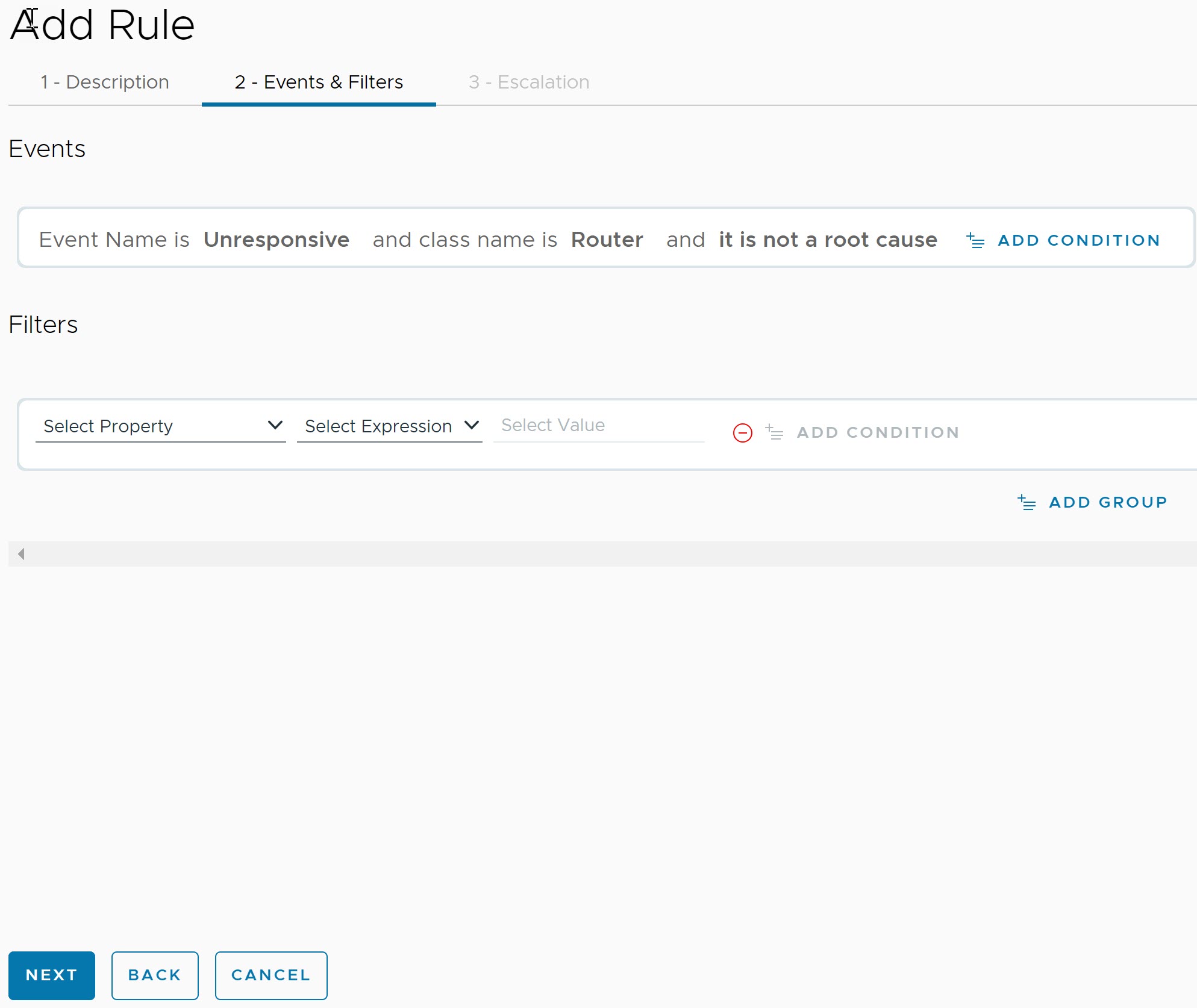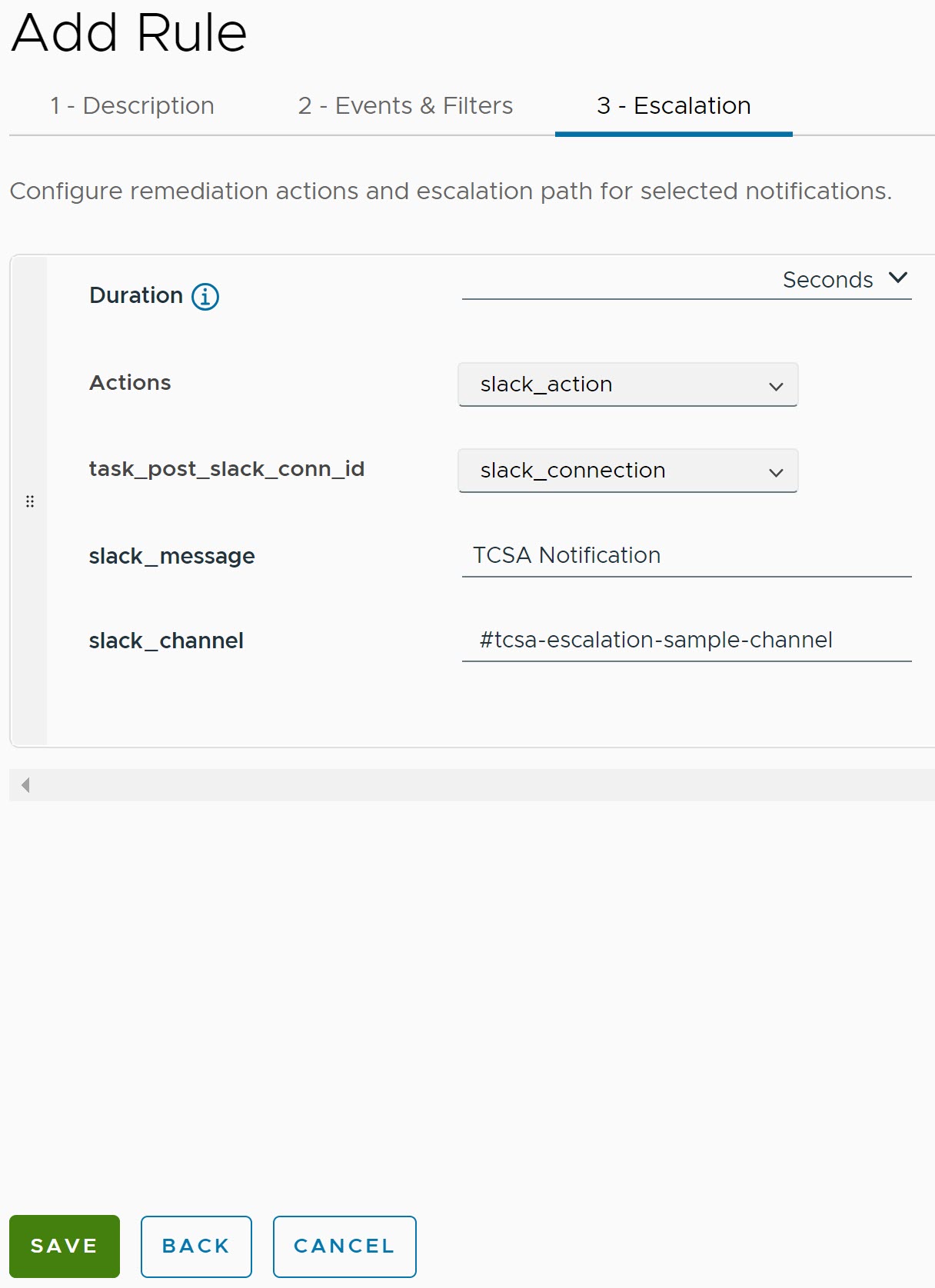In this section, you can find steps to create manual and automated Remediation Rules.
Prerequisites
The Actions must be pre-defined before creating the Remediation Rule. There are some pre-defined set of actions available in the Actions page which can be used while creating the Remediation Rule. The relevant connection for the corresponding action must be configured with required authentication details and then selected in a rule.. For creating
Actions and Connections, see
Configuring Actions chapter.
Procedure
- Go to https://Telcocloud serviceassurance-ui-IP.
- Enter the username and password.
- Click Next.
- Navigate to .
- Click Add.
An
Add Rule page appears.
- Under Description, update the following parameters:
- Click Next.
- Under Events & Filters, you have Events and Filters.
- For Events, select the Event Name, and class type is, and the root cause from the drop-down menu. For example, Unresponsive, Switch, and it is not a root cause.
Note: The
Events selection is mandatory, and you cannot duplicate the
Events selection criteria.
- For Filters, select the Property, Expression from the drop-down menu, and enter the Value.
Note: The filter is an optional field
- To add multiple filters, click Add Group. The OR condition tag is used when you add filters from different groups.
- To add multiple properties for a given filter within the same group, click Add Condition. The AND condition tag is used when you add filters within the same group.

- Click Next.
- Under Escalation, update the following parameters.
- Duration: The duration represents the Smoothing Interval for momentary events. Select the duration in seconds.
- Actions: From the drop-down menu, select the required action. Once you select the relevant action, the corresponding parameter field appears and you can enter a message for the parameter.

- Click Save.
If an event matches the Remediation Rule, an action is triggered in the backend, and you can see the Remediation status in the
Tasks page.